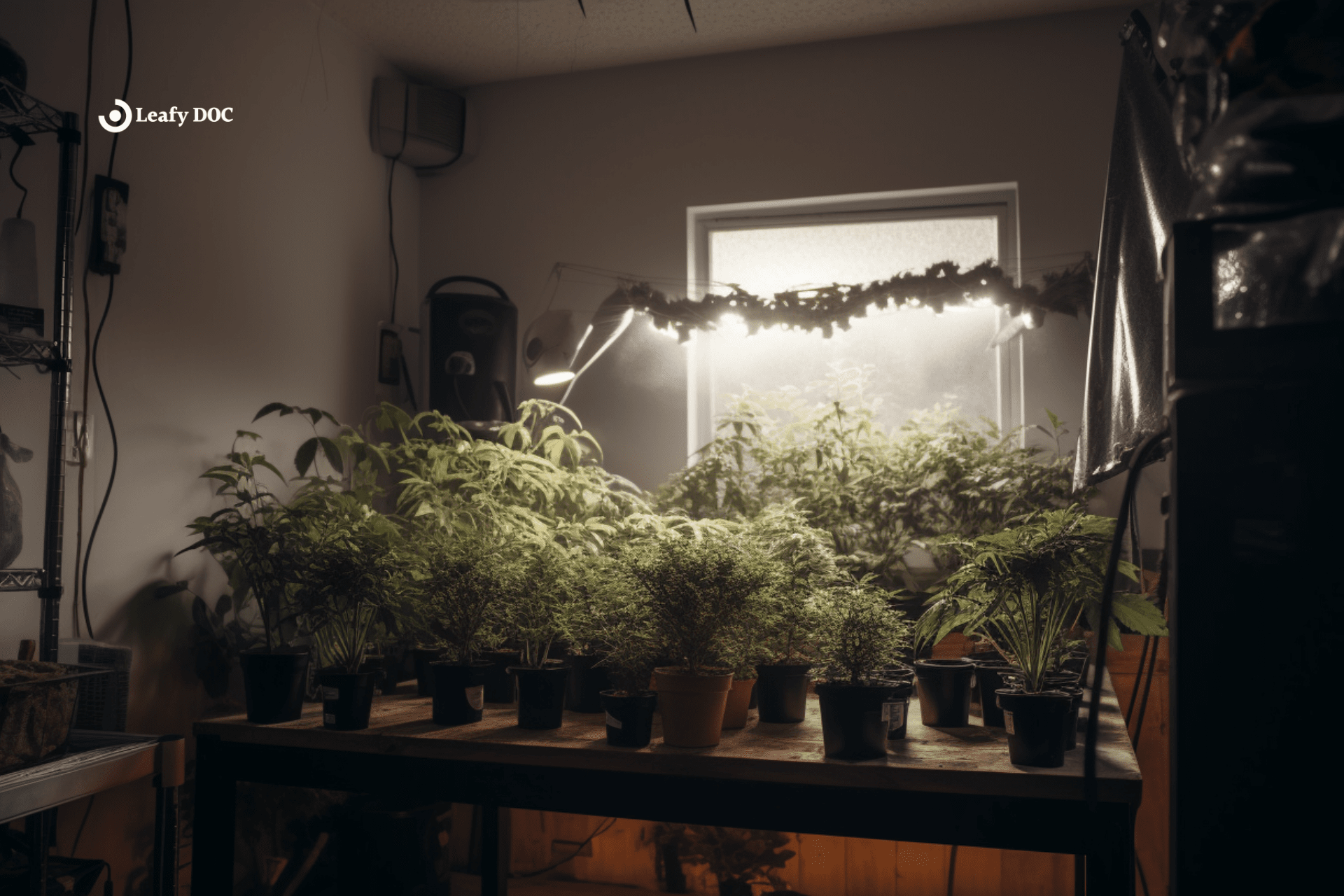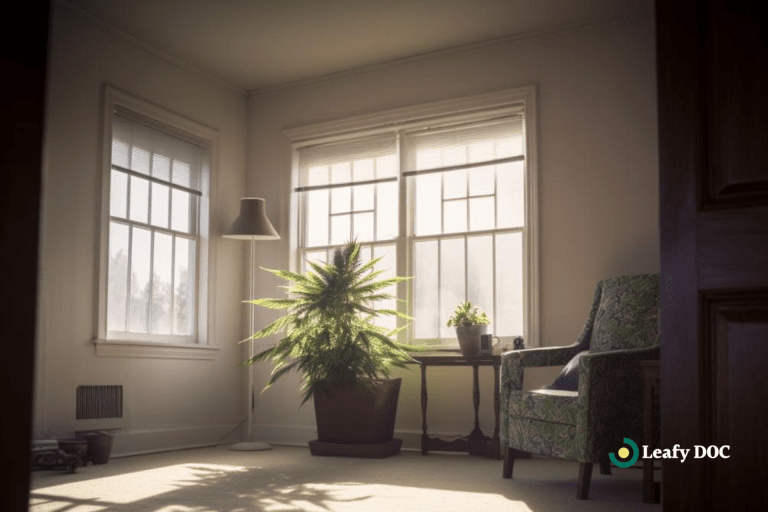A Medical Marijuana Cardholder’s Guide To Grow Healthy Weed
by Haley Mills · September 26, 2023
Discover how medical marijuana cardholders can grow their own top-quality cannabis with this essential guide. Cultivate healthy weed today and unlock the secrets to a thriving garden. Don’t miss out, start growing now!

Are you a medical marijuana cardholder looking to grow your own healthy weed? This guide is here to help you navigate the process and ensure you produce high-quality plants that meet your medicinal needs.
Growing your own marijuana gives you control over the quality and strain and can also be a rewarding and cost-effective way to access your medicine.
This comprehensive guide will walk you through the legal requirements for growing medical marijuana, including understanding the limits and regulations specific to your state.
We will also delve into the importance of choosing the right strains for your needs, as different strains offer different medicinal benefits. Whether you are looking for pain relief, anxiety reduction, or help with sleep, we will provide guidance on selecting the strains that are best suited for your specific conditions.
Additionally, we will explore the various factors to consider when setting up your growing space, whether it be an indoor setup or an outdoor garden. From lighting and ventilation to soil and nutrients, we will cover all the essentials you need to create a thriving environment for your plants.
So, let’s begin your journey to growing healthy weed that can provide you with the relief and healing you deserve.
Key Takeaways
- Legal requirements and regulations must be followed when growing medical marijuana as a cardholder.
- Proper ventilation and pest management are crucial for maintaining a healthy growing space.
- Finding reliable seed sources with high-quality genetics is essential for maximizing potency and desired effects.
- Whether choosing an indoor or outdoor growing space, understanding lighting options and nutrient management is vital for optimal growth and development.
Understanding the Legal Requirements for Growing Medical Marijuana
Now that you’ve learned about the benefits of medical marijuana, let’s dive into the legal requirements for growing your own healthy weed.
One aspect to consider when growing medical marijuana is ensuring proper ventilation for your growing space. Adequate ventilation is crucial for the health and growth of your plants. It helps maintain the right temperature and humidity levels, essential for optimal growth. Good air circulation also helps prevent the buildup of mold and mildew, which can harm your plants. To ensure proper ventilation, fans or exhaust systems can be used to keep fresh air flowing through your growing area.
Another essential aspect of growing healthy weed is managing pests and diseases in your marijuana plants. Just like any other crop, marijuana plants are susceptible to pests and diseases that can negatively impact their growth and yield.
It is important to regularly inspect your plants for any signs of infestation or disease and take immediate action to prevent further damage. There are various organic pest control methods available, such as neem oil or insecticidal soap, that can help you manage common pests like aphids or spider mites. Additionally, practicing good hygiene and sanitation measures, such as regularly cleaning your tools and equipment, can help prevent the spread of diseases among your plants.
By understanding and following the legal requirements for growing medical marijuana and ensuring proper ventilation and managing pests and diseases, you can cultivate healthy and high-quality weed for your own medicinal use.
Choosing the Right Strains for Your Needs
Consider your specific needs and preferences to find the perfect strains for you.
First and foremost, you’ll want to find reliable seed sources to ensure you’re starting with high-quality genetics. Look for reputable seed banks or breeders with a track record of producing reliable and potent strains. Reading reviews and doing research can help you find trusted sources.
Once you have found reliable seed sources, it’s time to think about maximizing the potency of your marijuana strains. Different strains have varying levels of THC and CBD, so choosing strains that align with your desired effects is important.
For example, if you’re seeking pain relief, you may want to look for strains with higher CBD content. On the other hand, if you’re looking for a more uplifting and energizing experience, strains with higher THC levels may be more suitable. Understanding the cannabinoid profiles of different strains can help you select the right strains for your needs.
Setting Up an Indoor or Outdoor Growing Space
When cultivating cannabis, it’s essential to establish an indoor or outdoor growing space that meets the plant’s specific needs. The first consideration is lighting options for indoor cultivation. Cannabis plants require a specific light spectrum for optimal growth and development.
Some common lighting options for indoor growing include fluorescent lights, high-pressure sodium (HPS) lights, and light-emitting diodes (LEDs). Each type of light has its advantages and disadvantages, so it’s important to research and choose the best option for your specific setup. Additionally, it’s crucial to consider the intensity and duration of light exposure, as different stages of plant growth require different lighting conditions.
For outdoor growing, one of the main decisions to make is whether to use soil or a hydroponic system. Soil cultivation is the traditional method and offers a more natural approach. It allows the plants to take in nutrients from the soil, resulting in a more flavorful end product.
On the other hand, hydroponic systems use a nutrient-rich water solution instead of soil. This method allows for more control over nutrient intake, resulting in faster growth and higher yields. However, it requires more monitoring and maintenance to ensure the plants receive the right balance of nutrients. Ultimately, the choice between soil and hydroponics depends on personal preference, resources available, and the desired outcome of the grow.
Mastering the Art of Cultivation Techniques
Mastering the art of cultivation techniques will enable you to produce high-quality cannabis. One crucial aspect of cultivation is nutrient management. Providing your plants with the right balance of nutrients is essential for their growth and development.
Different stages of the plant’s life cycle require different nutrient ratios, so it’s important to understand the nutritional needs of your cannabis plants. You can achieve this by using organic fertilizers or nutrient solutions formulated explicitly for cannabis cultivation. Regularly monitoring the pH levels of your soil or hydroponic system is also crucial to ensure optimal nutrient uptake.
Another aspect of cultivation is pest control. Like any other plant, cannabis is susceptible to various pests, such as spider mites, aphids, and fungus gnats. These pests can cause significant damage to your plants if left unchecked.
Integrated Pest Management (IPM) techniques can help you control and prevent pest infestations. This approach involves a combination of cultural, physical, and biological control methods. For example, you can introduce beneficial insects, like ladybugs, to your garden to naturally control pests. Maintaining proper sanitation practices and regularly inspecting your plants for signs of infestation can help you catch and address pest problems early on.
By mastering nutrient management and pest control techniques, you can ensure the health and vitality of your cannabis plants, resulting in high-quality yields.
Harvesting, Drying, and Storing Your Homegrown Medicine
Once you’ve successfully cultivated your plants, it’s time to harvest, dry, and store your homegrown medicine. Proper curing techniques are crucial to ensure the best quality and potency of your harvested marijuana.
After harvesting, it’s important to trim off any excess leaves and hang the plants upside down in a cool, dark, and well-ventilated area. This allows the plants to dry slowly and evenly, which helps preserve the terpenes and cannabinoids that contribute to the medicinal properties of marijuana. Monitor the drying process and make sure the plants are not drying too quickly, as this can result in a harsh and less flavorful end product.
Once the plants are dry, it’s time to remove the buds from the stems and store them in airtight containers. Glass jars with rubber seals are ideal for storing marijuana, as they help maintain the freshness and potency of the buds. Store the jars in a cool, dark place to avoid exposure to light and heat, which can degrade the cannabinoids. Properly cured and stored marijuana can last several months without losing potency.
Maximizing yield and potency also involves proper harvesting techniques. Harvesting too early can result in underdeveloped buds with lower levels of cannabinoids, while harvesting too late can lead to overripe buds with reduced potency. It’s essential to monitor the trichomes, the tiny resin glands on the buds, to determine the optimal time for harvest. Harvesting at the right time ensures your homegrown medicine has the highest levels of THC, CBD, and other beneficial compounds.
Frequently Asked Questions
Are there any restrictions on how much marijuana I can grow with a medical marijuana card?
There are restrictions on how much marijuana you can grow with a medical marijuana card. The maximum plant count and harvest limits vary by state, so research and comply with local regulations.
Can I sell the marijuana I grow with a medical marijuana card?
Yes, there are selling restrictions regarding marijuana grown with a medical marijuana card. It is important to understand your state’s legal implications and regulations before considering selling your homegrown marijuana.
Can I travel with my homegrown medical marijuana?
Legal implications and transportation regulations vary by state. Some states allow medical marijuana cardholders to travel with their homegrown marijuana, while others prohibit it. Research and follow the laws in your specific location.
Are there any specific safety precautions I should take when growing medical marijuana at home?
Indoor growing is generally safer for medical marijuana due to better control over environmental conditions. Proper ventilation is crucial to prevent mold and mildew growth. Consider using air filters and fans to maintain a healthy growing environment.
Last Updated: August 8, 2024
Get Approved for Your Medical Marijuana Card in Minutes!

Get Your Medical Card
Connect with a licensed physician online in minutes

Like This Article?
Share with your friends
Table of Contents
Keep Reading
-
Voices Of Healing: Personal Stories Of Medical Marijuana Patients
Uncover the remarkable tales of medical marijuana patients in Voices of Healing. Gain inspiration, uncover hope, and witness the life-changing potential of cannabis. Explore their personal stories today and be amazed by the power of medical marijuana. Click here to read now!
-
Best Medical Marijuana Doctors in New Jersey
Discover the top medical marijuana doctors in New Jersey offering expert care, patient education, and personalized cannabis treatments for chronic conditions!
-
Optimize Your Fitness Routine With Cannabis
Transform Your Fitness Regimen with Cannabis: Elevate Your Workouts to New Heights. Unleash the Power of Cannabis for Optimal Performance Today!



